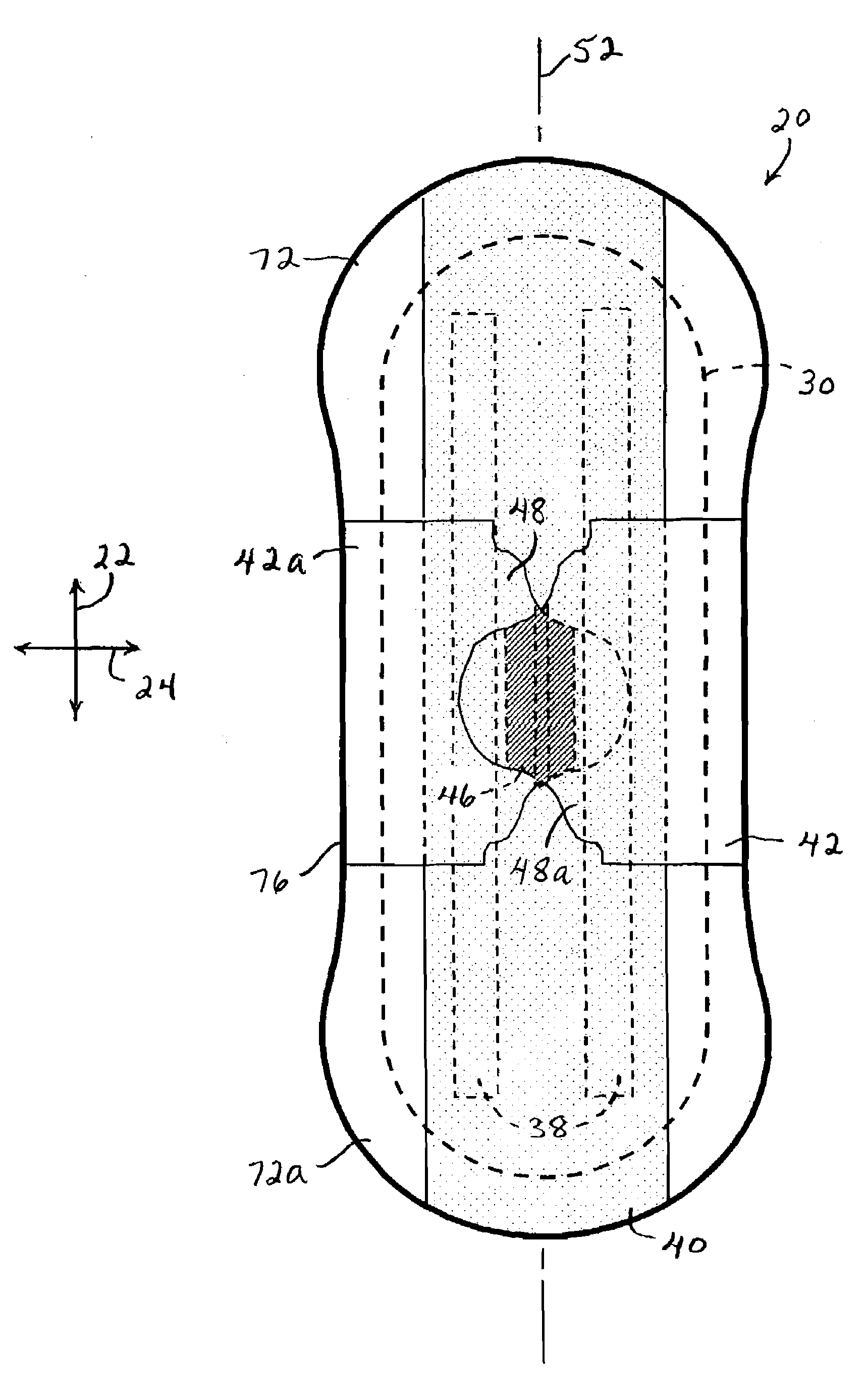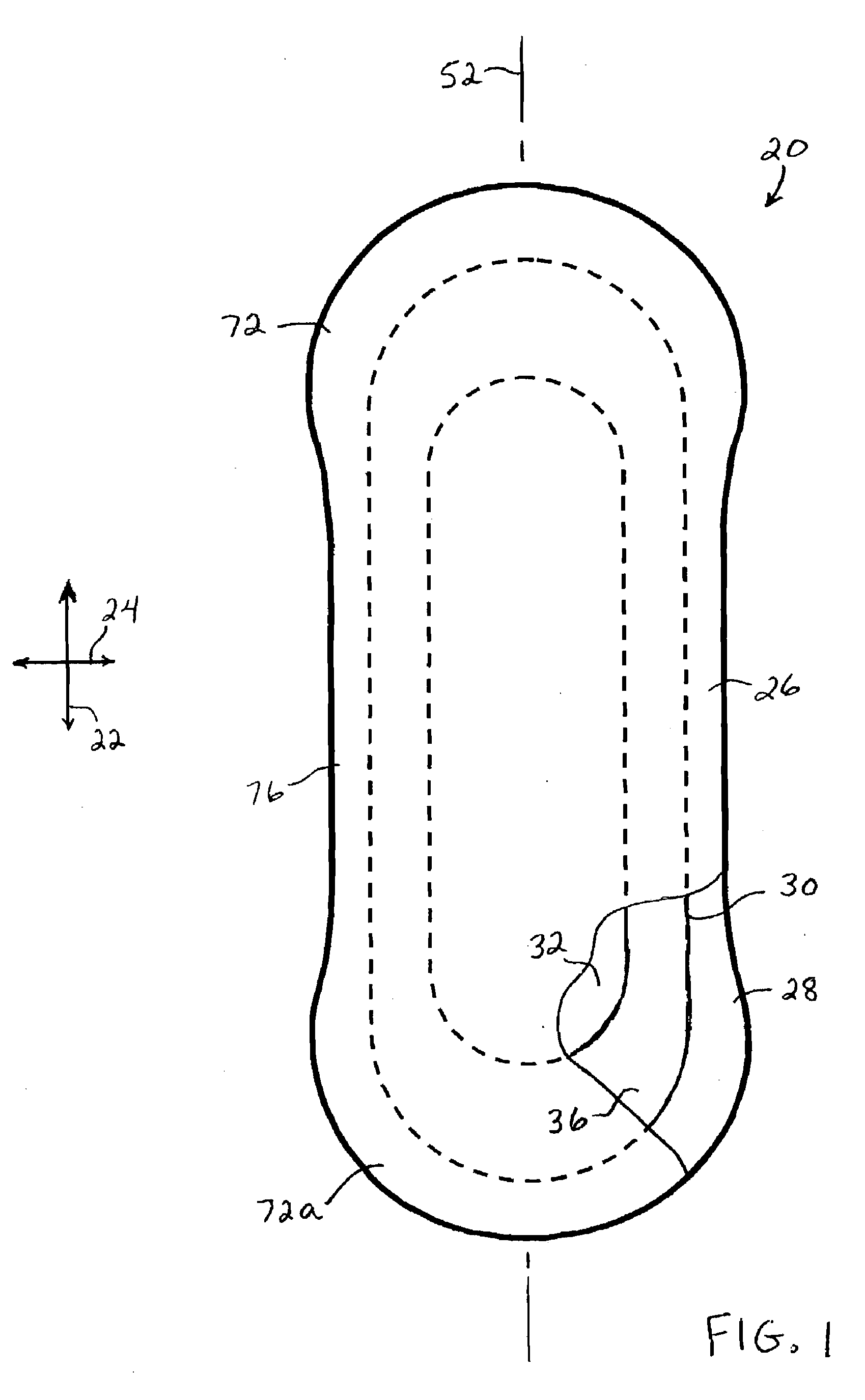Treatment of personal care products to reduce leakage
- Summary
- Abstract
- Description
- Claims
- Application Information
AI Technical Summary
Benefits of technology
Problems solved by technology
Method used
Image
Examples
example 1
Effect of PEG 600 Lauryl Ether and PEG 600 Monolaurate on the Viscosity and Elasticity of Menses Simulant
[0124]In this example, the effect of polyethylene glycol 600 lauryl ether and polyethylene glycol 600 monolaurate on the viscosity and elasticity of a menses simulant was determined.
[0125]19.6 grams of menses simulant (prepared as described above) was weighed into a 30 mL beaker. 0.4 grams of liquid surfactant (either polyethylene glycol 600 lauryl ether or polyethylene glycol 600 monolaurate) was added dropwise to the menses simulant to yield a 2 wt % surfactant solution in simulant. A small magnetic stir bar (approximately 0.5 inches long) was placed in the solution and the solution was stirred at about 4 rpm for 20 minutes to thoroughly mix. During mixing, a circular piece of polyethylene sheet ( 1 / 16 inch thick by 1⅛ inch diameter—the approximate inner diameter of the 30 mL beaker) was floated on top of the treated menses solution to protect the simulant from denaturation and...
example 2
Effect of Polyethylene Glycol 600 Lauryl Ether and Glucopon on the Viscosity and Elasticity of Menses Simulant
[0128]In this example, the effects of polyethylene glycol 600 lauryl ether and Glucopon 220 on the viscosity and elasticity of a menses simulant were compared.
[0129]To begin, stock solutions of Glucopon 220 and PEG 600 lauryl ether in phosphate buffered saline (PBS) (0.15 M sodium chloride and 0.01 M sodium phosphate; pH 7.2) were prepared at concentrations of 10 wt. %, 3 wt. % and 1 wt. %.
[0130]Treated menses simulant samples were prepared by adding each stock solution to menses simulant (prepared as described above) at 1 part stock solution plus 9 parts menses simulant by volume, in 30 mL beakers. The mixtures (total volume of 20 mL) were stirred with a magnetic stir bar for 10 minutes at a speed of approximately 4 rpm. Viscosity and elasitcity measurements were begun twenty minutes after addition of the Glucopon or PEG 600 lauryl ether stock solutions to the menses simula...
example 3
Effect of Treatment Agents on Viscosity, Elasticity, and Fouling Effects of Menses Simulant
[0133]In this example, the effects of various viscoelastant agents on the viscosity, elasticity, and fouling effects of a menses simulant were compared.
[0134]To begin, 99 grams of menses simulant (prepared as described above) was weighed into a 100 mL beaker. 1.0 grams of viscoelastant agent(s) (either sodium citrate, dextran, cysteine, polyethylene glycol 600 lauryl ether, polyethylene glycol 600 monolaurate, Glucopon 220, or equivalent amounts of sodium citrate and polyethylene glycol 600 monolaurate (i.e., 0.5 g sodium citrate and 0.5 g PEG 600 monolaurate)) was added to the menses simulant to yield 1 wt % viscoelastant agent(s) solution in simulant. A small magnetic stir bar (approximately 0.5 inches long) was placed in the solution and the solution was stirred at about 4 rpm for 20 minutes to thoroughly mix. During mixing, a piece of polyethylene sheet (approximately the inner diameter of...
PUM
| Property | Measurement | Unit |
|---|---|---|
| Fraction | aaaaa | aaaaa |
| Fraction | aaaaa | aaaaa |
| Fraction | aaaaa | aaaaa |
Abstract
Description
Claims
Application Information
 Login to View More
Login to View More - Generate Ideas
- Intellectual Property
- Life Sciences
- Materials
- Tech Scout
- Unparalleled Data Quality
- Higher Quality Content
- 60% Fewer Hallucinations
Browse by: Latest US Patents, China's latest patents, Technical Efficacy Thesaurus, Application Domain, Technology Topic, Popular Technical Reports.
© 2025 PatSnap. All rights reserved.Legal|Privacy policy|Modern Slavery Act Transparency Statement|Sitemap|About US| Contact US: help@patsnap.com



